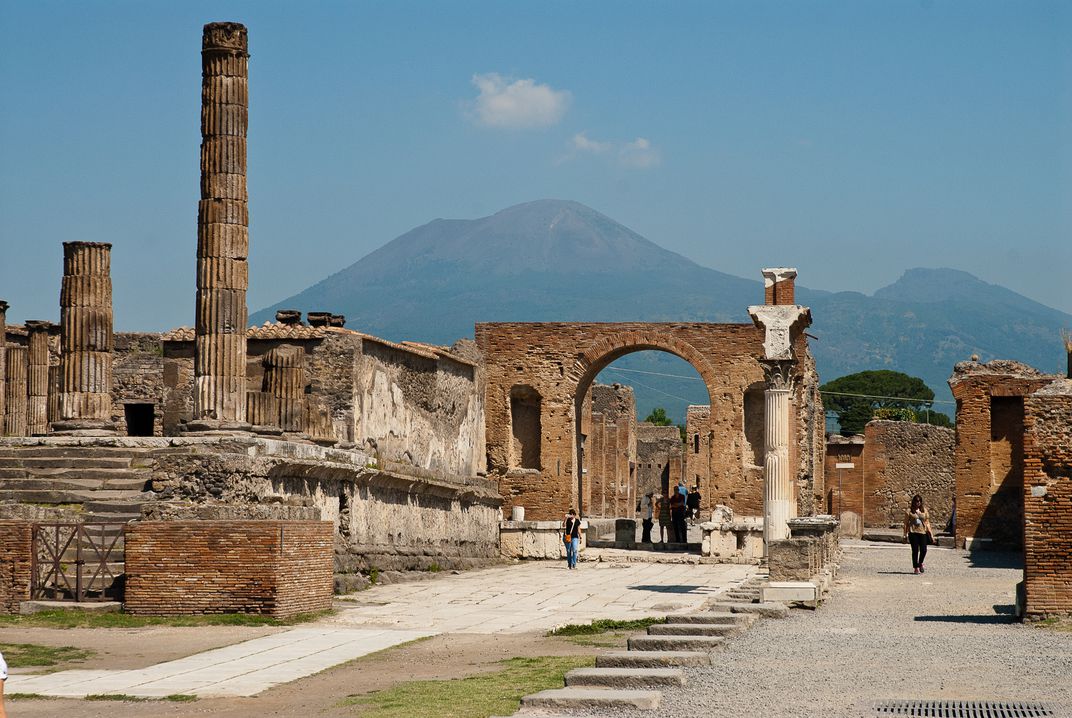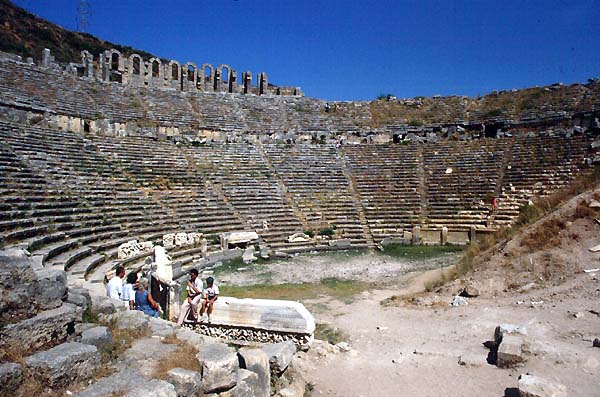

Three artists were drawing this Renaissance fountain. After many recitations of 'Desole, desole' I managed to find out it was 'd'accord' to drop off the luggage then, hike it out of there before the police could book me.

We drove our 'big' C5 Citroen into a quant small village square with its medieval fountain much to the astonishment of the locals. Our B & B is located in the medieval village perched high on the left bank of the town- the old oppidum of the Vocontii tribe.
ARCH OF TIBERIUS AT ARAUSIO WINDOWS
Vaison La Romaine is what you imagine a town in Provence would be: white stone walls (some taken from Roman ruins), terracotta scalloped tiles, wooden shutters either side of elongated French windows and of course, a Roman 'pont' or bridge over a pristine river-the Ouvèze.
ARCH OF TIBERIUS AT ARAUSIO PLUS
One side of the Arch depicts three Celtic trophies won in battle plus the enslaved Gauls below Highly decorative symbol of Augustan power and propaganda Guess what? It's another Augustan monument although it was later dedicated to Tiberius. The Arch was built on the Via Agrippa (road) linking Arles (Arelate) and Lyon (Lugdunum) around 20 B.C. The sculptures are significant because they blatantly show the conquest of the noble 'barbarian' Gauls by the II Legion of the Roman army. I was surprised by the relatively good condition of its bas-relief sculptures and also by the traffic jam that surrounded its roundabout. Note the huge retaining wall on the right that was part of the sanctuaryĪnother famous site of Orange is the Triumphal Arch. Sections of the sanctuary next door to the theatre The Orange theatre was part of a monumental building complex that included a sanctuary to an unknown deity located next door. Finally, the last tier was for women and foreigners. Many thanks to Mathieu Defline, the Director of Culture Espaces of Orange Theatre-antique, for organised our entry into the theatre.Ī three-tiered 'cavea' or seating based on status: nobles and prominent men at the front next, the men from the trade guilds or 'corporations' and other citizens higher up. Later in Roman theatre even women scandalously performed onstage. Intoxicated members of the audience were not uncommon. Roman theatre productions started out with Greek tragedies and comedies but 'progressed' to farces and mimes many becoming quite uncouth and bawdy. The theatre is still used for theatrical productions in the principate of guess who? Augustus!!! Aspendos in Turkey is the second the third is in Syria. It is only one of three Roman theatres in the world that still has its stage or 'proscaenium' with a huge back wall or 'scaenae frons'. Augustus made it a colony, Colonia Julia Firma Secundanorum Arausio on settling the II Legion Gallica (more on this later). Orange was originally territory of the Celtic Cavares tribe. For 15 odd Euros we could reach our first stop of Orange in one and a half hours. Varus, however, refused to listen to any accusations against his friend.A long drive from Vienne to Vaison La Romaine was helped by taking the motorway with a top speed of 130 kph. Varus could sort the whole matter out later. If they were in Roman custody, he assured Varus, their leaderless followers would be immobilized. At the last banquet before the beginning of hostilities (9), Segestes, a local chieftain and Arminius’ rival, urged Varus to arrest Arminius and his friends. Worse yet, treating the Germans like slaves, he exacted money from them.Ī revolt was inevitable, and its potential leader, Arminius, shared Varus’ mess, seeming so friendly that Varus suspected nothing. In endless legal proceedings, he behaved more like a “city praetor” than a general in command of an army in hostile German territory. Described as placid in mind and body, he was reputed to be more accustomed to life in the camps than to campaigning. With three legions, Varus marched through the partially pacified zone between the Rhine and the Elbe introducing the inhabitants both to Roman power and to the Roman administrative system. The Arch spanned the Vicus Jugarius between the Temple of Saturn and the Basilica Julia. The Roman general Germanicus had recovered the standards in 15 or 16 AD. In 6–7, Tiberius, Augustus’ adopted son and heir, was still fighting in nearby Pannonia, but Germany was relatively peaceful. The Arch of Tiberius ( Arcus Tiberii) was a triumphal arch built in 16 AD in the Forum Romanum to celebrate the recovery of the eagle standards that had been lost to Germanic tribes by Varus in 9 AD. Varus had enjoyed a long and successful political career including governorships in Africa (8–7) and Syria (7–4). In 6 or 7, Augustus appointed Publius Quinctilius Varus, a member of the imperial family by marriage, as governor. By 9 CE, the Romans were beginning to expand in Germany. 0.3–4, 1.3, 8.9–12, 15.1–6, 21.22–26) was connected with one of the most terrible disasters of the reign of Augustus.


 0 kommentar(er)
0 kommentar(er)
